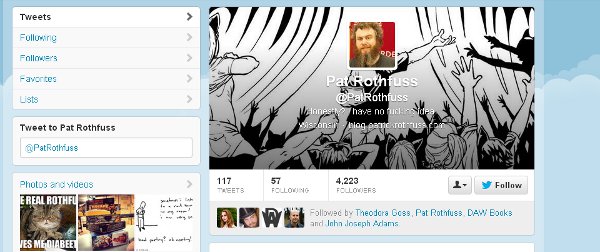
Twitter’s method for verifying accounts has been called into question after an author gained a blue tick badge while masquerading as another writer.
Fantasy author Mary Robinette Kowal said she analysed and mimicked writer Patrick Rothfuss’s writing style in a competition where fans had to guess which of five Twitter accounts was the latter’s real one.
Robinette Kowal’s @PatRothfuss account won with 42% of the vote, with Rothfuss (@PatrickRothfuss) only coming second with 15%, and Twitter was apparently convinced as well, giving her fake account the blue tick badge which means it has been certified as the real person’s true account.
Robinette Kowal suggested the method of verifying accounts needs reviewing after she tricked the social media site by copying Rothfuss’s writing style from his own comments on his blog.
She wrote on Tor.com: "I lifted language a couple of other times, including when he posted a link to Facebook and I just grabbed the exact words prefacing and retweeted them.
"Shortly after that tweet, a funny thing happened. My account got verified by Twitter as being "real." We don’t know how being verified works, but we know it doesn’t involve contacting the person."
She speculated that Twitter used a bot to look for commonly repeated phrases, after she changed her account name four times to remove the tag, yet was retagged soon after choosing a new handle.
The author added: "Regardless, whatever that process is someone at Twitter needs to take another look at it."
The social media site’s helpdesk says it does not accept verification requests, but uses the blue tick to "establish authenticity of identities of key individuals and brands", adding that the number of followers an account has has no bearing on verification.
Its guidance said: "Linking to your Twitter profile from an official website is the easiest way to confirm the authenticity of your Twitter account. Including Twitter’s follow button on your webpage is the absolute best way to do this."


